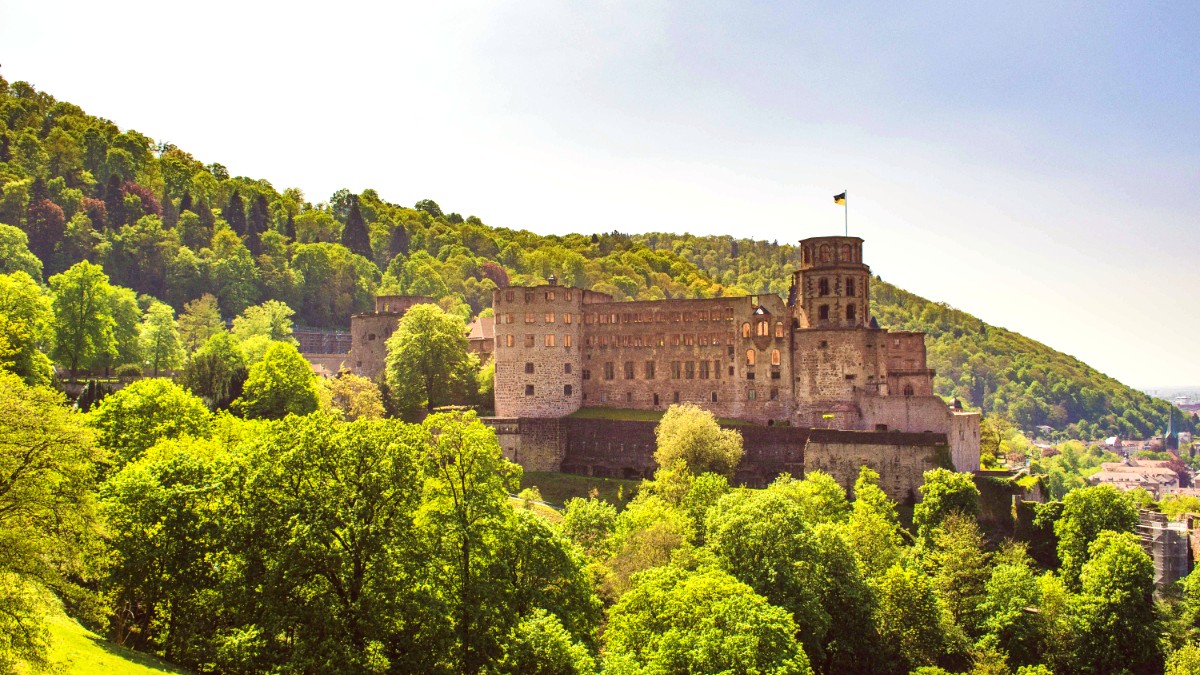
Baden Wurttemberg, Germany
German food leans towards hearty, comforting dishes, frequently featuring various meats, potatoes, and seasonal regional vegetables. Proximity to France introduces influences like Flammkuchen.
The Neckar River means freshwater fish can be found on menus. The surrounding region also has a strong wine-producing tradition, making local wines a common pairing.
Pork is prevalent in dishes like Schnitzel and Bratwurst. Beef often features in stews or roasts like Sauerbraten. Potatoes are a staple, prepared as Bratkartoffeln, Salzkartoffeln, or Knödel.
Cabbage (Sauerkraut, Rotkohl) are common side dishes. Spätzle (soft egg noodles), a Swabian specialty, often served with meat or as Käsespätzle. Flavors are typically savory, often with rich gravies and sauces, a balance of sweet and sour.
Breakfast (Frühstück): 7:00 AM to 10:00 AM (bread rolls, cheese, cold cuts). Lunch (Mittagessen): 12:00 PM to 2:00 PM (main meal, "Mittagsmenü" available). Dinner (Abendessen/Abendbrot): 6:00 PM to 9:00 PM (often lighter, restaurants serve full dinners).
A unique local chocolate praline. These round chocolates, often filled with nougat, were invented in 1863 as a discreet way for students to show affection.
Find them at Chocolaterie Knösel (Haspelgasse 12, Altstadt), the original creator.
A regional pear brandy or fruit spirit. This local liquor can be found in specialty shops or sometimes offered in restaurants.
A local digestif to experience.
A classic German dish. It is a thinly pounded, breaded, and pan-fried cutlet, usually made from pork (Schweineschnitzel) or veal (Wienerschnitzel).
Served with various sides like potatoes or fries. Widely available in traditional German restaurants.
A very thin, crispy flatbread, similar to pizza, originating from Alsace. Traditional topping includes crème fraîche, thinly sliced onions, and bacon. Many variations exist.
Beer (Bier): Germany is famous for its beer. Try local pilsners, refreshing wheat beers (Weizenbier), or darker lagers (Dunkel). Heidelberg has brewpubs like Kulturbrauerei Heidelberg and Vetters Alt Heidelberger Brauhaus. Wine (Wein): The Baden region is known for excellent wines (Riesling, Pinot Noir, Müller-Thurgau). Schnaps/Brandies (Obstler): Fruit brandies often consumed as digestifs. Sprudel: Sparkling mineral water, a common hydration choice.
For a special occasion or an elevated culinary experience.
These offer a good balance of quality, atmosphere, and price.
Affordable options for quick bites and casual dining.
Heidelberg's university status brings a diverse international food scene.
Options include Italian (pizzerias, trattorias), Turkish (Döner Kebab shops, restaurants), Asian (Thai, Chinese, Japanese, Vietnamese), Indian, and Middle Eastern cuisines.
Many establishments present these cuisines throughout the city.
Explore various neighborhoods for international dining experiences.
Held at Marktplatz, Friedrich-Ebert-Platz. Excellent for fresh produce, local cheeses, baked goods.
Sometimes feature small food stalls selling ready-to-eat items, a true local experience.
Heidelberg does not feature large, dedicated indoor food halls like some other major cities.
Food stalls appear at festivals like Heidelberger Herbst or Christmas Market.
Online forums and dedicated apps (e.g., HappyCow for plant-based options) are good resources. Direct communication with restaurants (calling ahead or speaking with staff upon arrival) is beneficial.
Preparation and communication remain helpful for specific dietary needs.
Many German menus provide a list of common allergens (often numerically coded) at the bottom.
Heidelberg is becoming more accommodating for specific dietary needs.
Larger supermarkets stock gluten-free products (e.g., bread, pasta) if you plan to self-cater.
Some restaurants might indicate common allergens on their menus using codes or symbols.
Some local culinary schools or private chefs may offer classes focusing on German or Baden-Württemberg cuisine.
Food tours explore Heidelberg's culinary history, local specialties, and markets.
The surrounding Baden wine region offers opportunities for wine tasting at vineyards, especially during harvest season (autumn).
This famous cake features layers of chocolate sponge, whipped cream, cherries, and a hint of Kirschwasser (cherry brandy). A must-try for any visitor.
A true German classic.
A soft, chewy, salty pretzel, often served plain or with butter. Find them fresh at any bakery throughout the city.
A perfect quick snack.
Held in late September, this festival features a lively wine village, numerous food stalls with regional delicacies, and live music, celebrating the harvest season.
From late November to December, Heidelberg's Christmas Market spreads across various squares in the Altstadt. A sensory delight, offering traditional treats and Glühwein.
A prominent music festival (classical, jazz, contemporary) held in spring, attracting international artists and cultural enthusiasts.
Embracing Heidelberg's diverse dining scene, from its historic pubs to its modern cafes, forms a memorable part of your travel experience.